Birth
1160
Death
c. 1213
Queen Tamar was the first female sovereign of Georgia, leaving an indelible mark on the country's rich heritage. From her strategic ascent to co-ruler at the age of 18-a groundbreaking move by her father, King George III, in a patriarchal medieval society-to overcoming opposition and leading a transformative reign marked by a cultural renaissance and military triumphs, Tamar's story is a testament to her resilience and visionary leadership. Her reign is often referred to as the Golden Age of Georgian history. Even though Georgia was governed by several queens, only Tamar was given the title of “mepe” or “king.”
Personal Information
Name(s)
Queen Tamar, Tamar of Georgia, Tamar Bagrationi
Date and place of birth
1160; Georgia
Death and place of death
1213; at Agarani Castle, Georgia
Family
Mother: Burdukhan; She was the daughter of Khuddan, an Alan princess, and served as the queen consort of George III. This marriage was aimed at strengthening ties with powerful northern neighbors.
Father: George III of Georgia; He was the 8th king of Georgia from 1156 to 1184. His reign, and that of Tamar, are seen as the 'golden age' of Georgian history, the era of empire, diplomatic success, and military triumphs.
Sister: Rusudan (1158/1160 - ?) was Queen Tamar’s younger sister. She married Manuel Komnenos (1145 - 1185?), the eldest son of Byzantine emperor Andronikos I Komnenos. They had two sons: Alex and Davit Komnenos. After Andronikos' deposition and demise, Manuel was blinded and may have died as a result of his injuries. According to accounts, Rusudan, along with her sons, sought refuge in Georgia, fleeing Constantinople.
Marriage and Family Life
First Marriage: The nobles ordered Queen Tamar to get married in order to have a military leader and provide a successor to the throne. They selected Rus Prince Yuri (1160 - ?), the son of Prince Andrei I Bogolyubsky of Vladimir-Suzdal, who had been living as a fugitive in the North Caucasus. Yuri was brought to Georgia for his union with Tamar in 1185. Over time, Tamar became disillusioned with her husband, leading to their divorce in 1187. Yuri's reputation painted him as a heavy drinker with dark tendencies, including sexual misconduct, torture, and sodomy. As a result, Yuri faced exile from Georgia to Constantinople in 1188.
Second Marriage: The Queen chose her second husband herself. It was David Soslan (? - 1207), an Alan prince and a skilled military commander, who became a crucial ally, helping Tamar overcome rebellious nobles who had rallied behind Yuri. David Soslan's role as Tamar's spouse–depicted in art, charters, and coins–was solely determined by the need for the male aspects of
kingship. However, he retained a subordinate position, sharing the throne with Tamar and lacking independent authority. His power was derived entirely from his reigning spouse.
Son: Lasha Giorgi/George IV (1191/4 - 1222/23), the son of Queen Tamar and David Soslan, was the king of Georgia in 1213-1223. He continued Tamar's policy of strengthening the Georgian feudal state. The Mongol expedition in 1221–1222 resulted in defeat for Georgia, with George IV severely wounded. He died at the age of thirty-one and was buried in Gelati monastery. He was succeeded by his sister Rusudan.
Daughter: Rusudan (1194-1245), the daughter of Queen Tamar and David Soslan, ruled Georgia from 1223-1245. Rusudan was unable to preserve the advancements of her mother and brother, and her death marked the beginning of the end of the Georgian Golden Age.
Education
Short version: The details of Queen Tamar’s education are not known.
Religion
Orthodox Christianity. She was canonized by the East Orthodox church as the Holy Righteous King Tamar, and received her own feast day (May 14) called Tamaroba.
Transformation(s)
Queen Tamar's life ambitions and her transformation of gendered assumptions were profoundly influenced by the intricate political circumstances she navigated. In 1177, her father, King George III, faced a rebellion from local nobles aiming to depose him in favor of his nephew, Demna. Supporters of the rebellion considered Demna the legitimate heir of his assassinated father, David V. George III quelled the uprising, imprisoning or executing the rebels. Subsequently, recognizing the need to secure the legitimacy of his family's rule, George III initiated Tamar into government affairs, and in 1178, when she was eighteen, he crowned her as co-ruler. In a patriarchal medieval society, where women were typically relegated to subordinate roles, Tamar's ascent to co-ruler was a groundbreaking move by her father, King George III.
This strategic move by George III was implemented to legitimize Tamar's future reign in the absence of male heirs. For six years, Tamar and George III ruled jointly, but upon his death in 1184, Tamar faced challenges to her reign. As the first female ruler in Georgia's history, her legitimacy was questioned by skeptical nobles.
The opposition to Tamar's political rule was led by the potter Kutlu Arslan. His faction demanded the establishment of an independent political structure called "Karavi," with the queen, referred to also as king, excluded from its activities. This marked a significant challenge to the existing power structure, reflecting a demand for the redistribution of state power in 12th-century Georgia.
In the face of this opposition, Tamar demonstrated remarkable political courage. Instead of resorting to force, she opted for negotiations. Two women, Khuashak Tsokali and Kravai Jackeli, acted as negotiators, showcasing surprising, yet perhaps increasingly normalized, roles for women in the country. Tamar's adept handling of negotiations secured her continued royal power, and the nobles' assembly gained increased decision-making authority on state issues.
These events underscore Tamar's resilience and strategic acumen in the face of political challenges. Her ability to navigate the complex dynamics of power struggles and negotiate effectively contributed to her lasting legacy as one of Georgia's most influential rulers. In transforming gendered assumptions, Tamar's legacy became a beacon of inspiration, showcasing the transformative power of leadership irrespective of gender.
less
Significance
Works/Agency
Tamar, the inaugural female monarch of Georgia, ruled during a tumultuous period marked by global religious conflicts. Engulfed in wars for most of her life, she steered Georgia through challenging times.
Amidst the turmoil, Tamar's royal treasury prospered, giving rise to a cultural renaissance. Ecclesiastical art, literature, and meticulously illustrated manuscripts flourished under her patronage. She oversaw the construction of new cathedrals, elevating the artistic and literary landscape of Georgia.
In a striking departure from prevailing practices, Tamar outlawed torture, the death penalty, and eschewed brutal punishments such as whippings, blindings, and castrations. Approving remarriages and upholding religious tolerance, she continued Georgia's tradition of embracing diversity.
A pivotal moment in Tamar's governance was the establishment of the Empire of Trebizond on the Black Sea coast in 1204. By the end of her rule, Georgia had attained the pinnacle of its power and fame in the Middle Ages.
Military victories defined Tamar's reign, expanding the borders of the Georgian Kingdom. Successful defenses against Seljuk Turks and neighboring powers solidified Georgia's reputation as a formidable force in the region. The battles of Shamkori (1195) and Basiani (1202) stood as triumphant highlights in Georgian military history.
Tamar's economic policies spurred growth and prosperity. Reforms in trade, agriculture, and currency stability contributed to the overall well-being of the kingdom. Aqueducts, bridges, and strategically placed fortresses marked important engineering achievements during her era.
Known for her religious tolerance, Tamar fostered an environment of coexistence among diverse religious communities. Her reign was characterized by unusual equality, with peasants elevated to nobility, nobles akin to princes, and princes adopting the stature of kings during what is now referred to as Georgia's Golden Age. Tamar's legacy is a testament to her multifaceted impact, military prowess, cultural flourishing, economic prosperity, and commitment to tolerance and social harmony.
Reputation
During the early years of Queen Tamar's reign, she grappled with formidable challenges, including opposition from the nobility and invasions by foreign forces. The pretext for these invasions was rooted in gender bias, with critics contending that Tamar's gender rendered her unfit to rule the country.
Throughout her lifetime, Queen Tamar garnered widespread recognition, earning a reputation as a capable and visionary leader. This recognition has endured over time, with modern scholarship recognizing her pivotal role in shaping Georgia's history. The significance of Tamar's acclaim persisted even after her death, contributing to the continuing growth of her posthumous reputation, ultimately solidifying her status as one of Georgia's most revered rulers.
Tamar's death was met with intense mourning among the Georgian people, the sounds of grief echoing as if the nation had been plunged into the depths of despair. The profound influence Tamar exerted on her nation was vividly encapsulated in "The Life of Tamar, King of Kings," a prominent chronicle within the compendium known as Kartlis Tskhovreba (The Life of Kartli).
Despite initial challenges and opposition rooted in gender norms, Queen Tamar's legacy evolved into one of reverence and celebration. Her reputation underwent a profound change, with Tamar evolving from a ruler facing gender-based opposition to a respected and celebrated sovereign.
In modern scholarship, Queen Tamar is acknowledged as a visionary leader who defied gender norms, leaving an indelible mark on Georgian history. Her posthumously elevated reputation recognizes her not only as a key figure in medieval Georgia but also as a symbol of women's resilience and capability in leadership roles.
Legacy and Influence
Queen Tamar's canonization by the Eastern Orthodox Church as the Holy Righteous King Tamar highlights her revered status within the religious context. The establishment of her own feast day on May 14 reflects the recognition of her virtuous and righteous rule. The unique bilingual Greco-Georgian colophon attached to the Vani Gospels manuscript, where she is referred to as a saint during her lifetime, underscores the deep religious and cultural significance she held for her contemporaries.
The legacy of Queen Tamar extends beyond religious recognition into the realm of literature, where she served as the muse for the epic poem "The Knight in the Panther’s Skin." The enduring masterpiece by Shota Rustaveli not only immortalizes her in Georgian literary tradition but also delves into complex themes of chivalry, love, and rulership. The symbolic crowning scene, paralleling George III's co-optation of Tamar, offers a rich allegory, suggesting the equality of female and male leadership, a notion quite progressive for its time.
The panegyrics dedicated to Queen Tamar, such as Chakhrukhadze's "Tamariani," showcase the continued admiration for her legacy in Georgian culture. These poetic celebrations emphasize her virtues, leadership, and enduring influence, reinforcing her image as a paragon of virtue and strength.
Queen Tamar's legacy also manifests in tangible ways through the numerous institutions and structures named in her honor. This widespread recognition, from universities to airports, reflects the enduring respect for her contributions across various facets of Georgian society. The continued use of her name in contemporary contexts serves as a testament to the lasting imprint she left on the cultural, religious, and political landscape of Georgia.
In the realm of virtual storytelling, the inclusion of King Tamar’s Georgia in the popular game Civilization VI: Rise and Fall provides a modern avenue for exploring her historical significance. The game's portrayal of Tamar as a smart and diplomatic leader who supports the arts and defends her kingdom aligns with historical records, contributing to a broader understanding of her impact.
less
Controversies
Controversy
The controversies surround the passing of Queen Tamar in 1213. Historical sources from the Tamar period indicate that she was buried in Gelati, yet the exact location remains unknown, giving rise to numerous legends and theories. One theory suggests that Tamar's burial site was intentionally concealed in a secret niche at the Gelati monastery to safeguard it from desecration by adversaries. Another version proposes that her remains were reburied in a distant location, possibly in the Holy Land.
Russian poet Mikhail Lermontov, who crafted the romantic poem "Tamara," drew inspiration from an old Georgian legend featuring a siren-like mountainous princess bearing the name Queen Tamar; this adds another layer of controversy. Lermontov's portrayal of the Georgian queen as a destructive seductress, although lacking historical basis, has significantly influenced discussions about Tamar's sexuality.
less
Clusters & Search Terms
Current Identification(s)
History; Politics
Search Terms
Queen Tamar; King Tamar; Tamar the Great; Bagrationi Dynasty; Georgian Queen; Medieval Georgia; 12th century; Female Monarch; Queenship
less
Bibliography
Sources:
1. Metreveli, Roin. Mepe Tamari. Tbilisi: Ganatleba, 1991. https://el.ge/articles/43195
2. Janashvili, M. Tamar Mepe. Tbilisi: Georgian Women’s Society of Tbilisi, 1917. http://openlibrary.ge/bitstream/123456789/4996/4/tamar%20mepe.pdf
3. Javakhishvili, Ivane. The Life of Tamar, King of Kings. Georgian National Academy of Science, 1944. https://dspace.nplg.gov.ge/bitstream/1234/58745/1/Cxovreba_Mefet Mefisa_Tamarisi_1944.pdf
4. Karitchashvili, D. Georgia in 12th Century. Tbilisi, 1902. https://dspace.nplg.gov.ge/bitstream/1234/68254/1/Saqartvelo_Metormete_Saukuneshi.p df
5. Makalatia, Sergi. Tamar Mepe. Iverta Mkhare, 1990. https://dspace.nplg.gov.ge/bitstream/1234/56813/1/Tamar_Mefe.pdf
6. “Civilization VI: Rise and Fall - Tamar Leads Georgia.” Civilization VI – The Official Site. https://civilization.com/news/entries/civilization-vi-rise-and-fall-tamar-leads-georgia/
Images:
1. Metreveli, Roin. Mepe Tamari. Tbilisi: Ganatleba, 1991. https://el.ge/articles/43195
2. Janashvili, M. Tamar Mepe. Tbilisi: Georgian Women’s Society of Tbilisi, 1917. http://openlibrary.ge/
3. Javakhishvili, Ivane. The Life of Tamar, King of Kings. Tbilisi: Georgian National Academy of Science, 1944. https://dspace.nplg.gov.ge/
4. Karitchashvili, D. Georgia in 12th Century. Tbilisi: 1902.
https://dspace.nplg.gov.ge/
5. Makalatia, Sergi. Tamar Mepe. Iverta Mkhare, 1990.
https://dspace.nplg.gov.ge/
6. Civilization VI: Rise and Fall - Tamar Leads Georgia. Civilization VI – The Official Site. https://civilization.com/news/
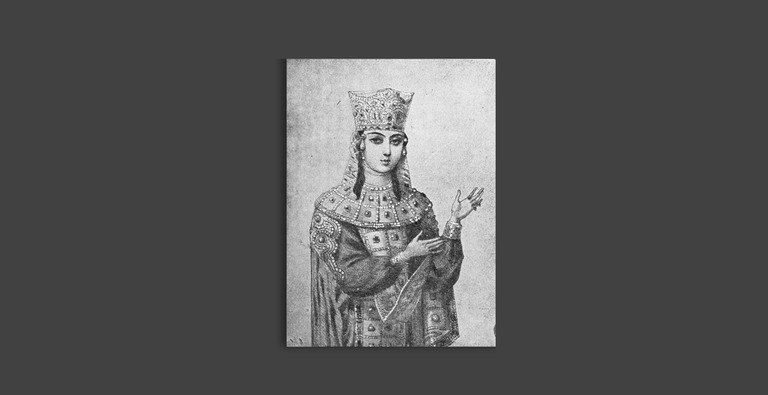
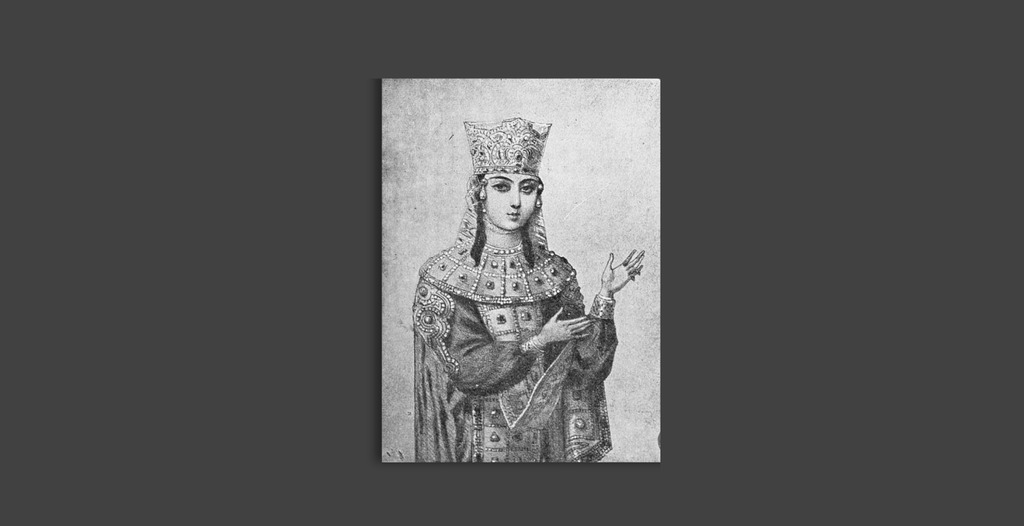
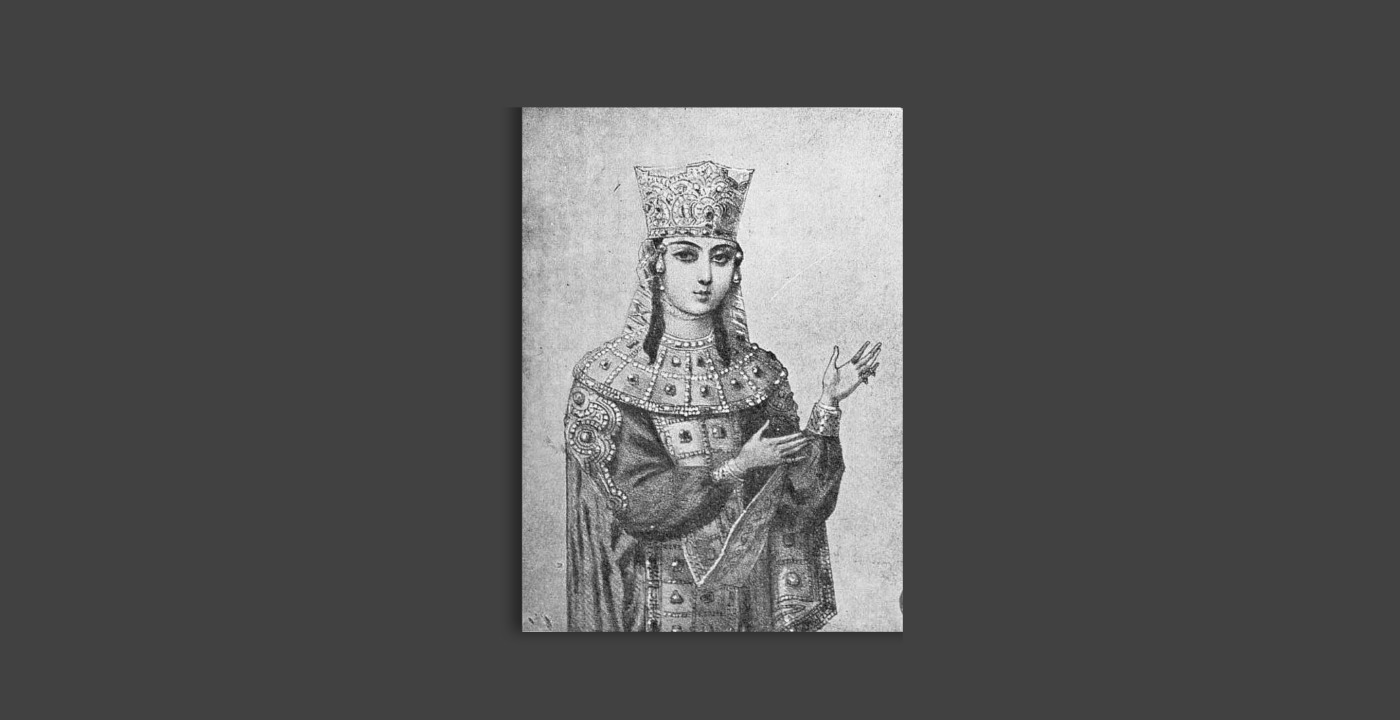
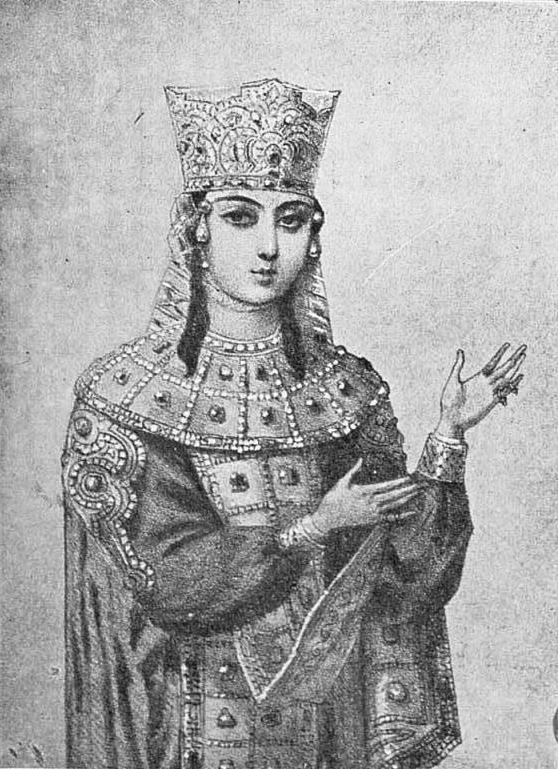
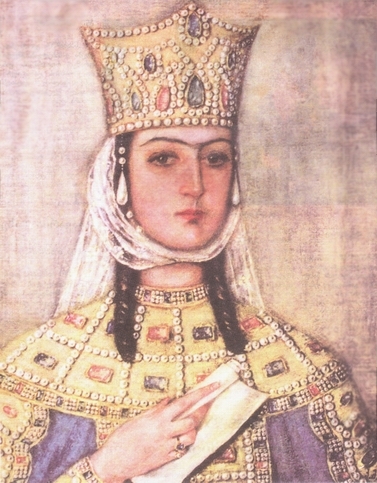
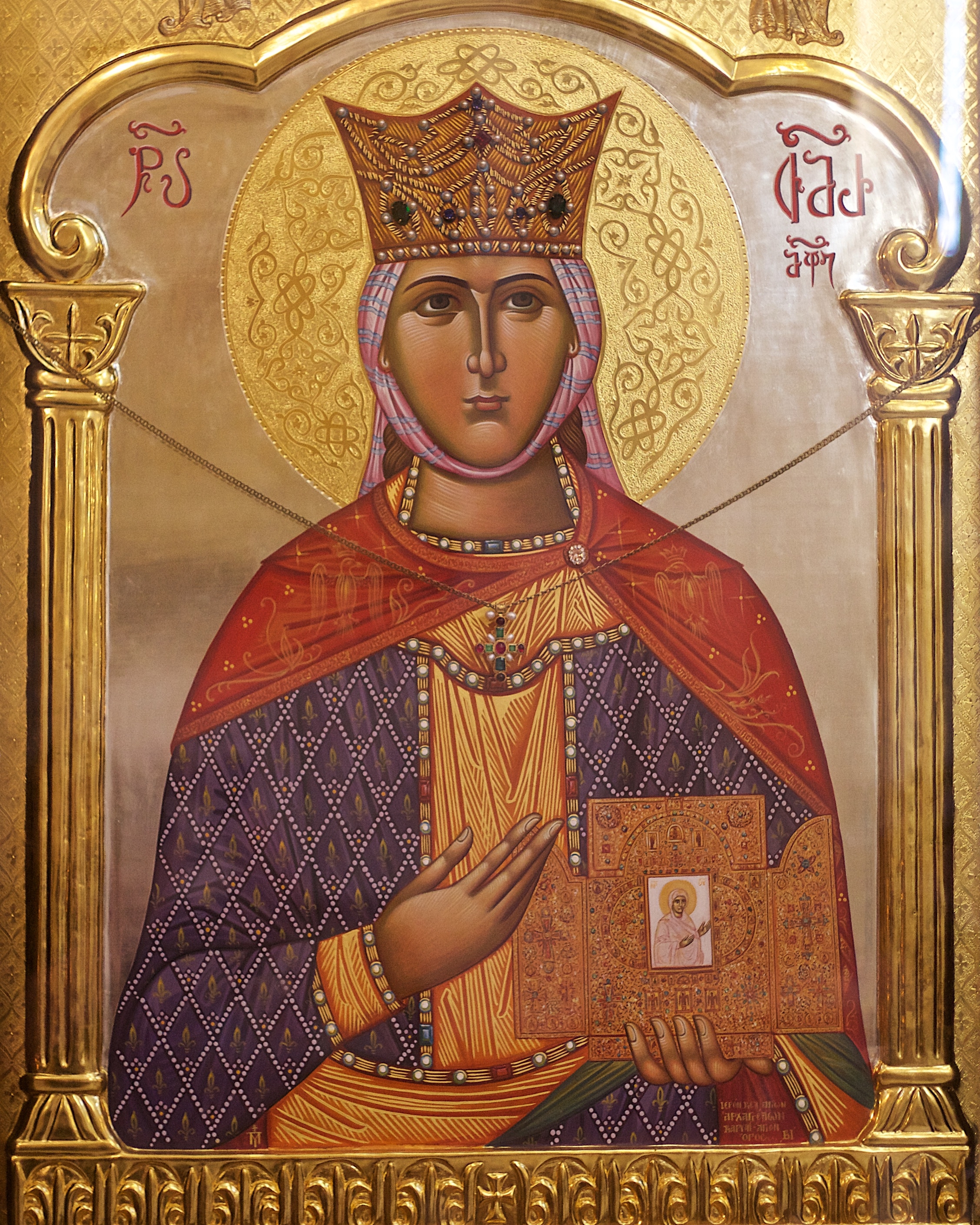
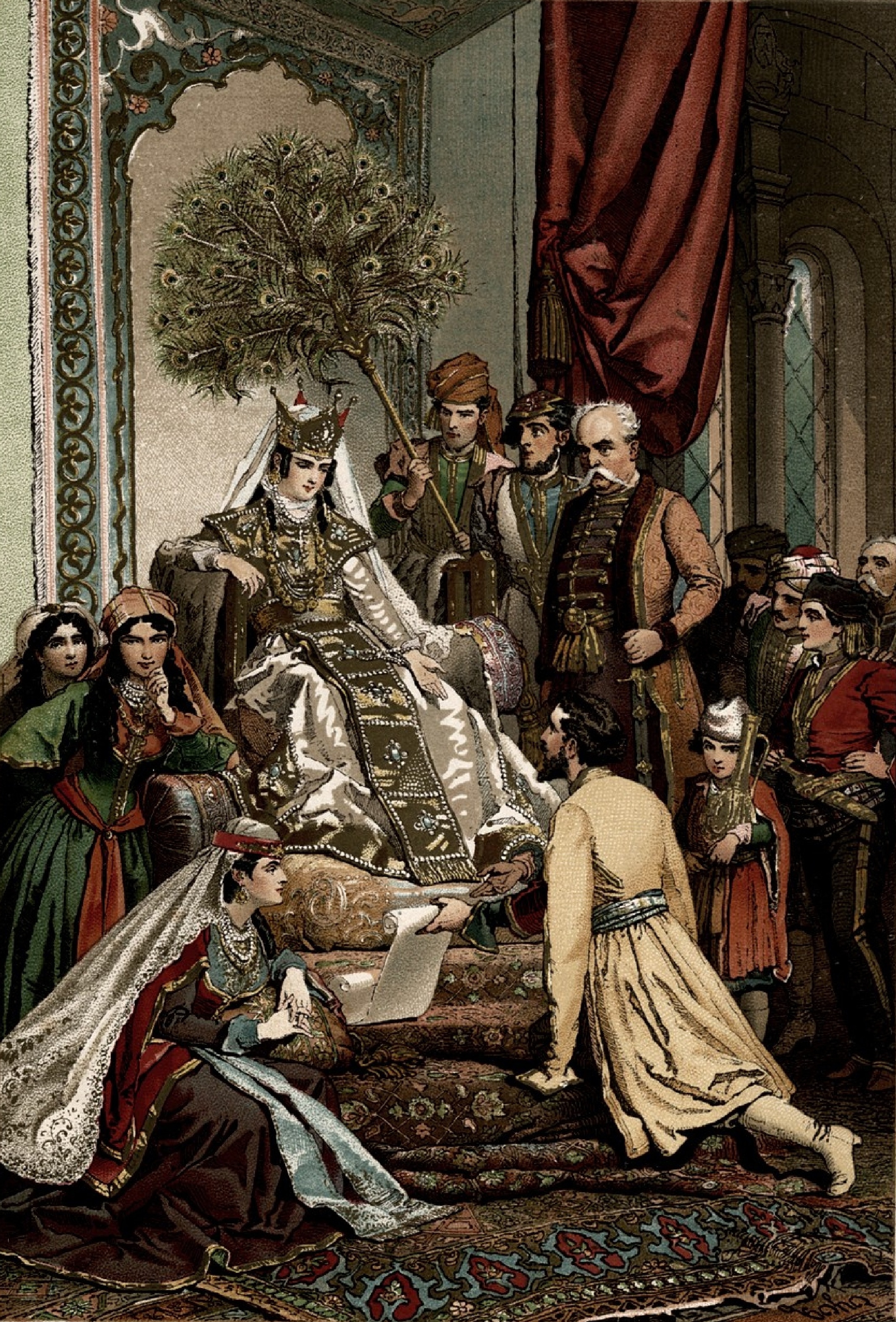
Comment
Your message was sent successfully